I posted on the Facebook/Darkroom group some pictures of my old film canister collection that I’ve been accumulating on and off then on again for over forty years now. Those pix inspired an incredible response from as far as my home town to the far flung reaches of the globe.
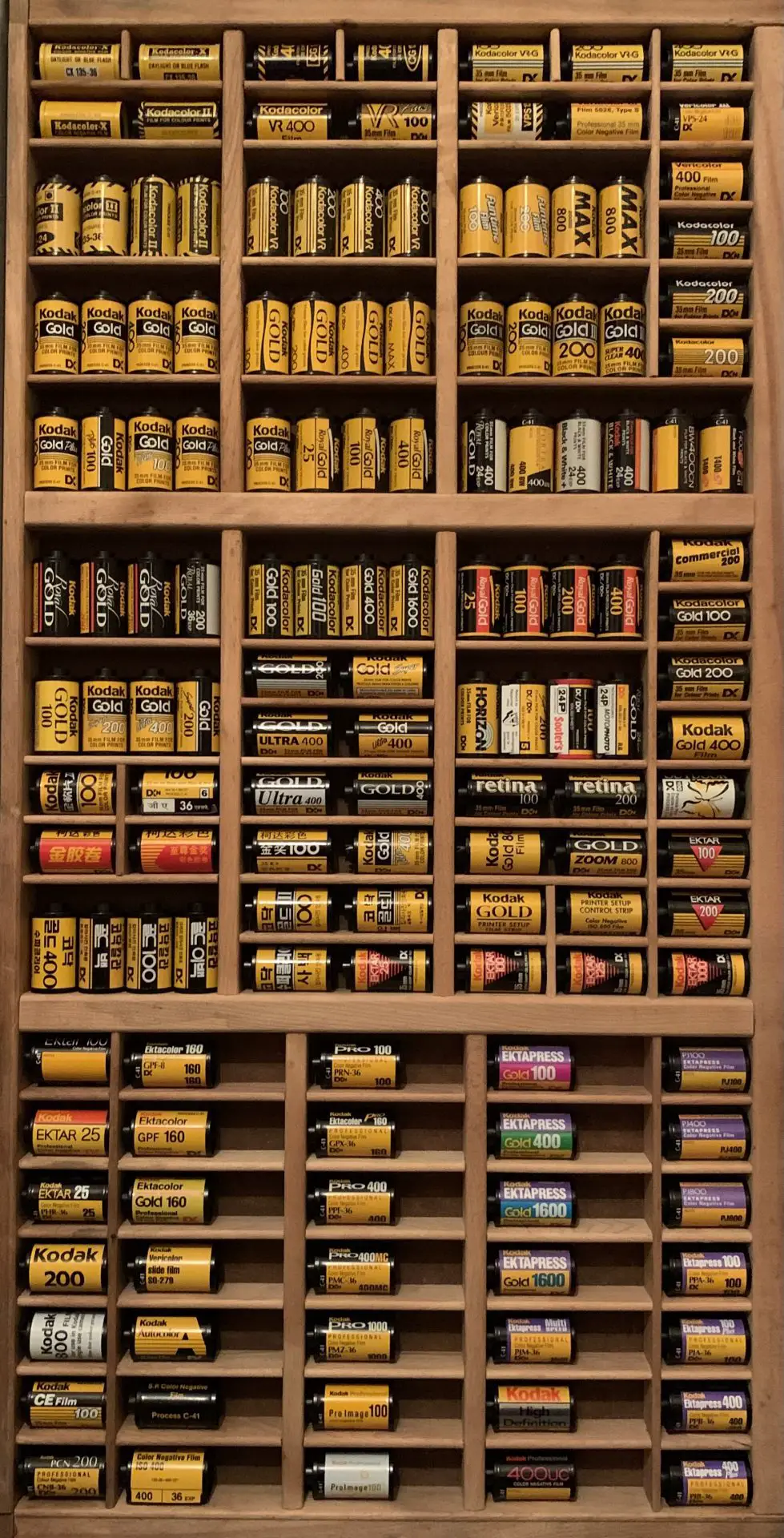
When these were posted I had no idea of the range of emotional reactions from members of this unique group. Everything from love and nostalgia for our lost but not forgotten Neopan SS to resentment and maybe even anger for the passing of our beloved Kodachrome and Reala. But all things change.
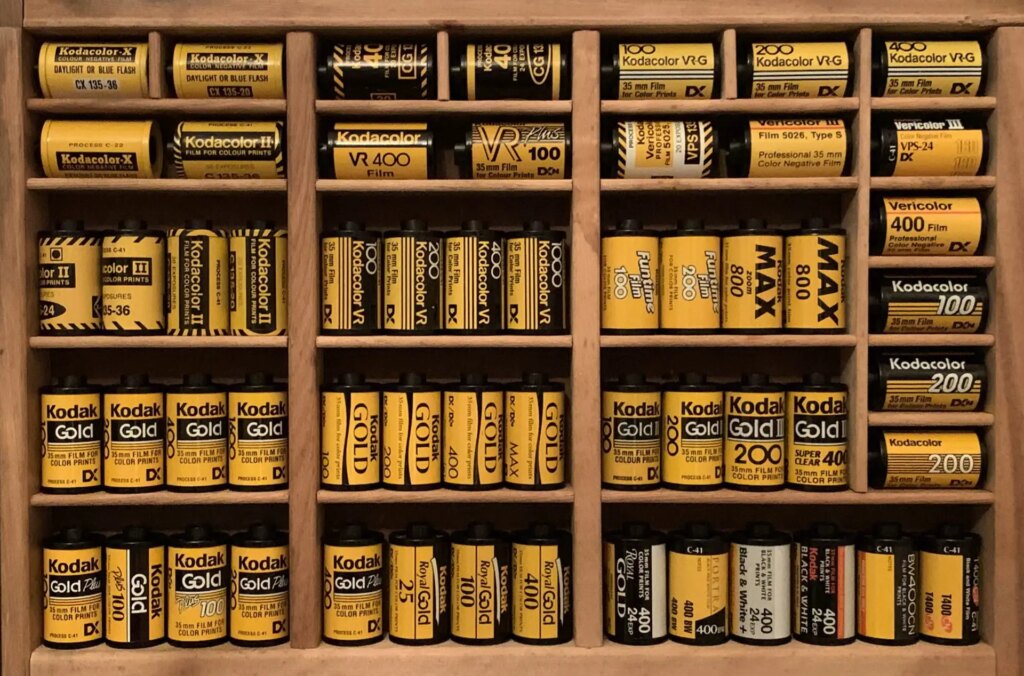
For me it all began in 1980 when I began working at was maybe the fourth or fifth “One Hour Mini-Lab” in Canada. The first of thousands that would clutter the “strip malls” and shopping plazas around the world. Along with hundreds of other unskilled teenagers, my lack of skills was made up for in sheer enthusiasm. The customers came in droves nonetheless to sample my meagre skills and pay handsomely for the privilege! “Those were the days!”
Of course all of those 35mm film cans got chucked into the dustbin of history. Both physically and metaphorically. I know as I took out the trash often enough.
What to do with all of those film cans I wondered (other than filling up the landfill). Maybe I should save some. Just a few….
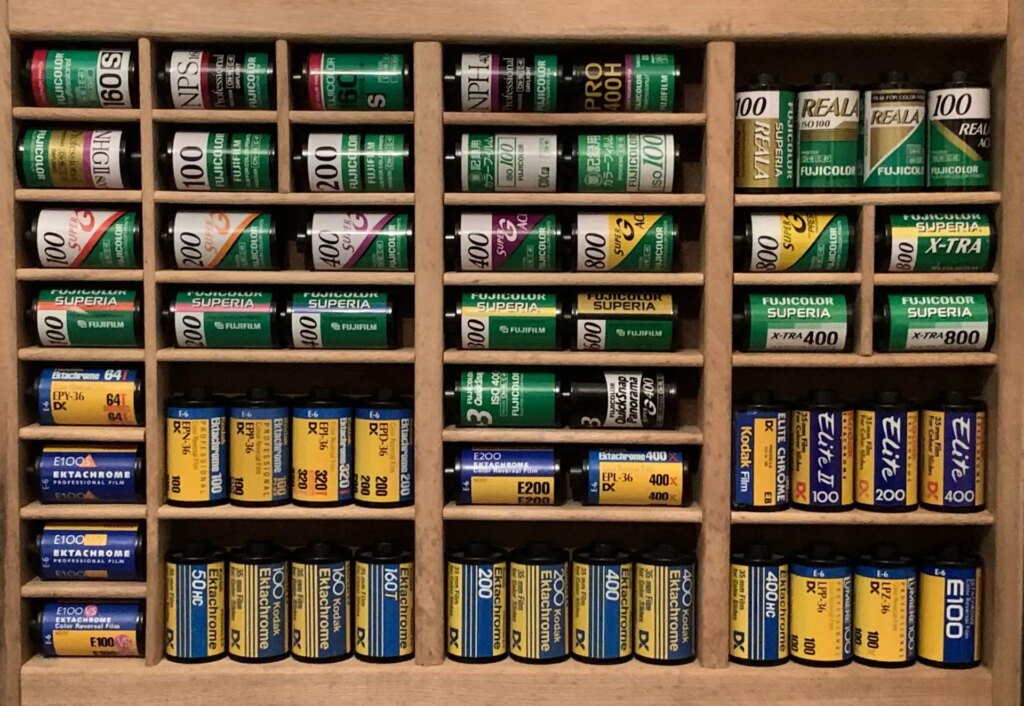
The industry expanded in leaps and bounds over the next two decades. Back in the 50’s and 60’s Kodak made a “Kodacolor X” ASA 80 and a Vericolor for the C-22 process, that was it for colour negative film. The full extent available to the amateur and professional market back then. Starting in 1972 the C-41 process began to take over as a replacement for the polluting C-22 process. Things got bigger fast!
Kodak, Fujifilm, Agfa, Ilford, Konica et al. were battling for market share on television, magazines and at your local camera store/photofinisher. Kodacolor ii & 400 were replaced with Kodacolor VR 100, 200, 400 & 1000. Then VR-G. Then Gold. Then Super Gold. Then Ektar ! Fujicolor, Agfa, Konica & 3-M all had their equivalents in what seemed like a never-ending slugfest of one-upmanship amongst the big names in our industry.
One sample of each! That’s all I wanted. I suspected well ahead of time that what is new will soon be obsolete. That’s when the collection began in earnest.
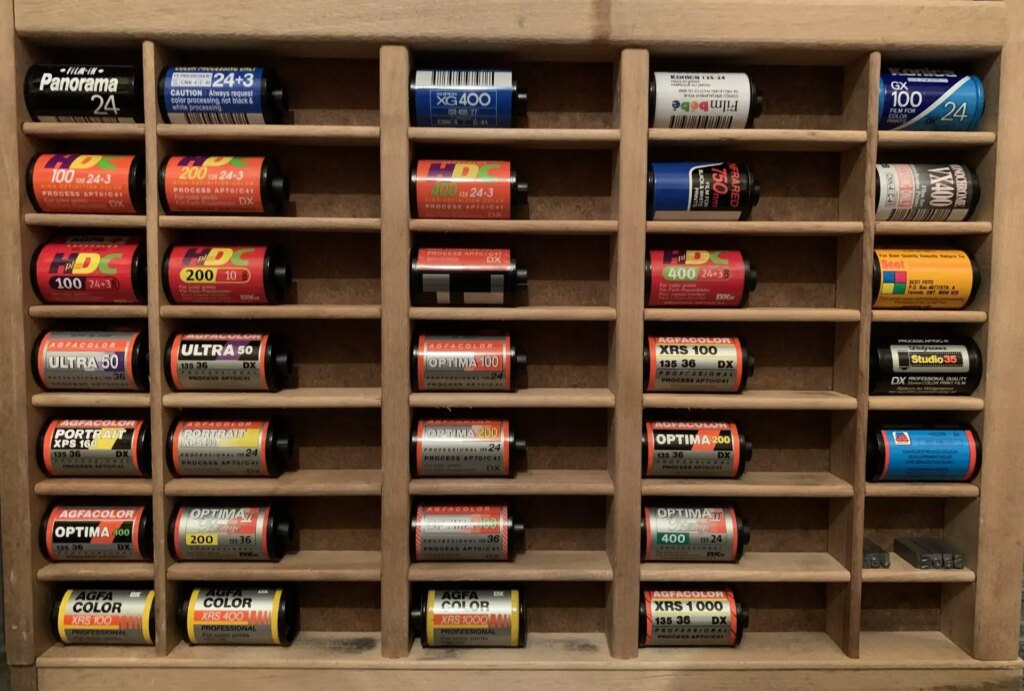
Things got busier. New employers, new equipment, new printers, new processors. More customers, more volume, more services, more capacity.Throughout the 80’s and 90’s we were living through the “Golden Years” of the still photography industry. The dusty box of film cans that I’ve been collecting became a carton, the carton became a crate. And then…
1997. The first hints of real danger to an industry used to constant expansion came with a photograph naturally enough. In a glossy camera magazine no doubt. A picture of a digital camera the name and brand I’ve long since forgotten. At the time I had no feeling of doom for the industry, more a feeling of change in a business comfortable with change. No reason to stop collecting film cans.
2000. A few short years later and the writing was on the wall. Customers and colleagues alike warned that within a year, maybe two, I’ll be looking for a job, so I was out in six months to a different industry altogether. No more film cans to add to the pile. Maybe no more film cans period!
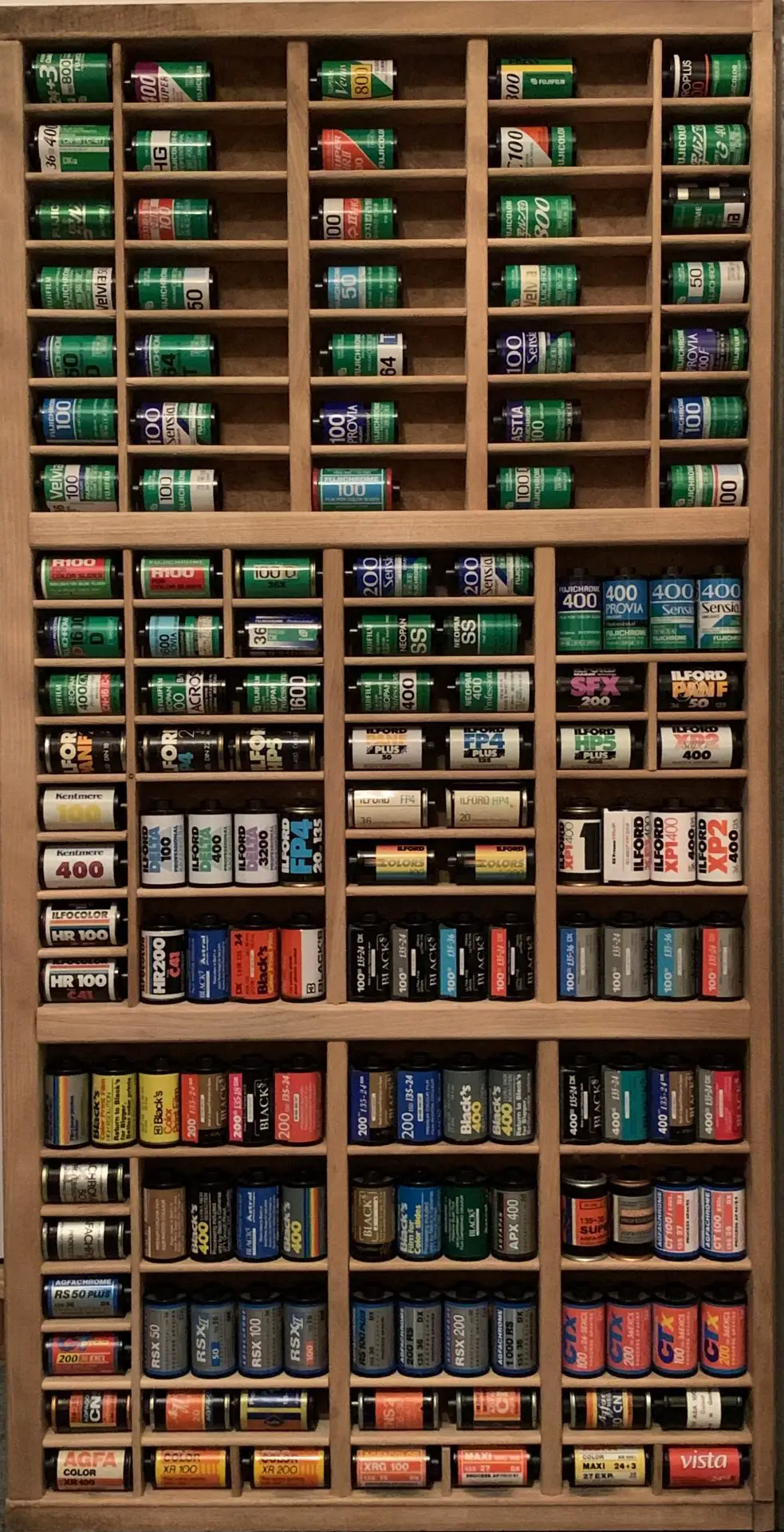
Watching from the sidelines in a different business I saw Agfa wrapping up, Ilford restructuring and “The Great Yellow Father” as Kodak was known, filing for bankruptcy. Visiting my former employer from time to time I could see business getting slower and slower. More staff turnaround. The old crew were gone to greater things. Sad to watch former glory turn into a shell of its former self. The next and last time I was there, they were gone.
Perhaps ten to fifteen years would pass before another great change would take place before our eyes in the photofinishing business. Now photographers are returning to film. Younger people are embracing film and film cameras for the first time like it was never there before. The complex reasons are well beyond the scope of this story. Suffice to say that they do it and they enjoy it like I always did. New films are appearing on the market. Kodak has returned to making Ektachrome and is hiring on hundreds of production personnel to keep up with demand. Ferrania in Italy has been resurrected. Rollei in Europe is re-introducing former Agfa products plus creating new ones of their own.
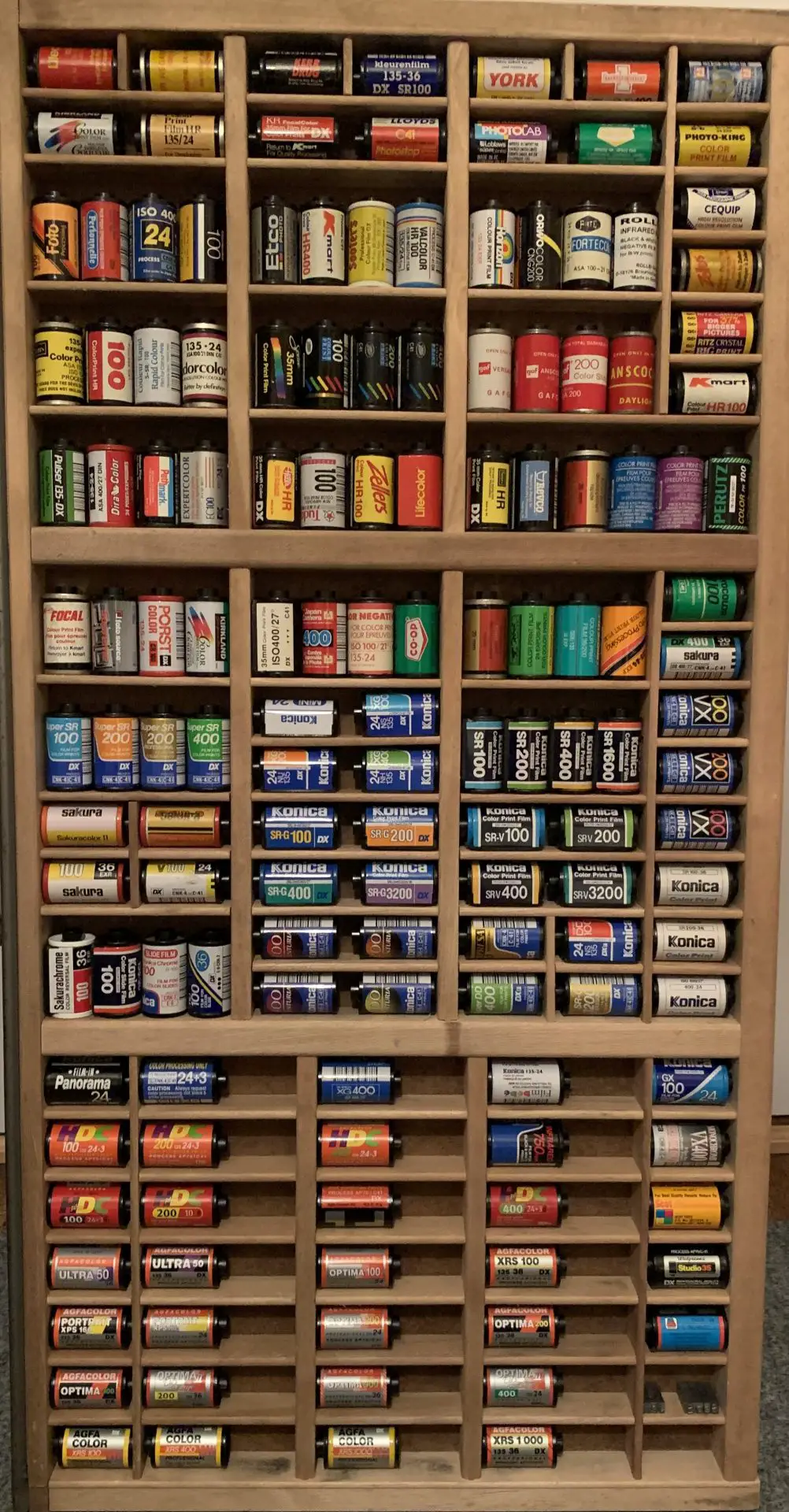
More collecting. But truly, the only constant in the universe is change itself. With that said I’m happily back to collecting again. Not just the old ones from a bygone era but the new ones from the present time. Knowing as I do that in a very few short decades, they too will be part of a collection to be shared.
Share this post:
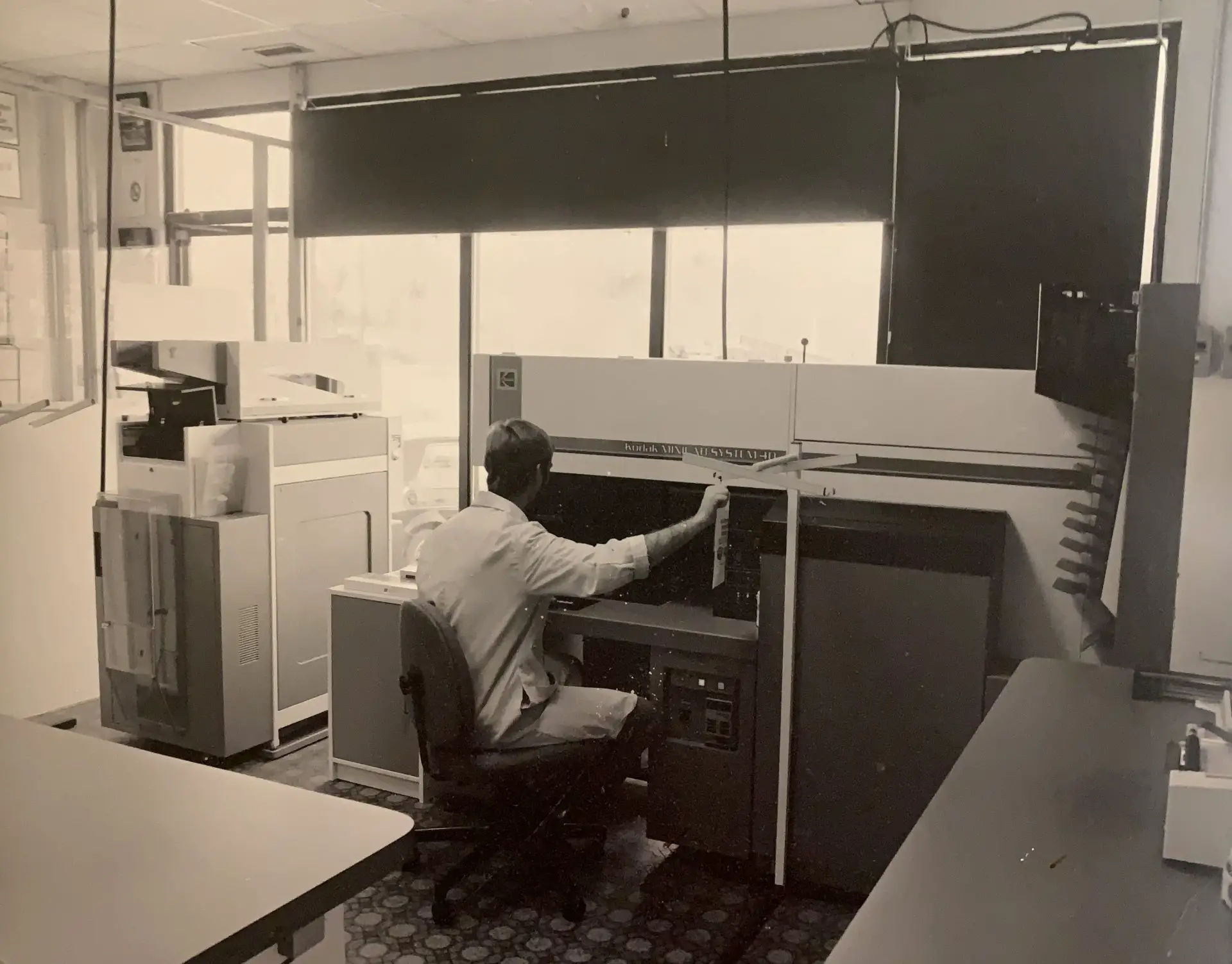








Comments
Steven G on The Collection – An Accumulation of Film Canisters
Comment posted: 22/04/2023
Comment posted: 22/04/2023
DANIEL J CASTELLI on The Collection – An Accumulation of Film Canisters
Comment posted: 22/04/2023
Through this collection, you've assembled a unique 'snapshot' of film photography.
Comment posted: 22/04/2023
Kodachromeguy on The Collection – An Accumulation of Film Canisters
Comment posted: 22/04/2023
Comment posted: 22/04/2023
Comment posted: 22/04/2023
Peter Brixey on The Collection – An Accumulation of Film Canisters
Comment posted: 22/04/2023
Comment posted: 22/04/2023
Comment posted: 22/04/2023
Comment posted: 22/04/2023
Dave Powell on The Collection – An Accumulation of Film Canisters
Comment posted: 22/04/2023
I'm wondering if you have a Kodak Photomicrography Color Film canister? I don't any more, but it was an ASA-16 emulsion optimized to enhance redish slide stains. With a little corrective filtering, it also produced natural-looking landscapes with very tight grain.
If you don't have a PCF canister, it'd be one for your want list!
Comment posted: 22/04/2023
AZD on The Collection – An Accumulation of Film Canisters
Comment posted: 22/04/2023
It seems strange to feel nostalgic for these little metal cans, but it makes sense. Photography itself is meant to capture a moment in time, and it works surprisingly well. Sometimes you see a picture and are immediately transported. The tools and materials we used can become part of that. One of the great pleasures of photography was popping the lid off a fresh roll of film, with a quick whiff of sweet chemical magic and a bit of excitement for whatever was about to happen.
Comment posted: 22/04/2023
Geoff on The Collection – An Accumulation of Film Canisters
Comment posted: 22/04/2023
Comment posted: 22/04/2023
David Angel-Blair on The Collection – An Accumulation of Film Canisters
Comment posted: 25/04/2023
I also worked in photofinishing for a local camera store in Ottawa, Ontario. For more than 14 years I processed many different C-41, E-6 and B&W films.
I noticed you have some old (late 70s, early 80s) Ilford B&W canisters. I remember these were often reused to load bulk B&W because the end caps would pop off. Can't do that with Kodak canisters.
Do you have a Kodak Technical Pan 2415 film canister? I believe this film is still considered the finest grain B&W film ever made. Wish it was still available.
David
Comment posted: 25/04/2023
Tom on The Collection – An Accumulation of Film Canisters
Comment posted: 20/06/2023